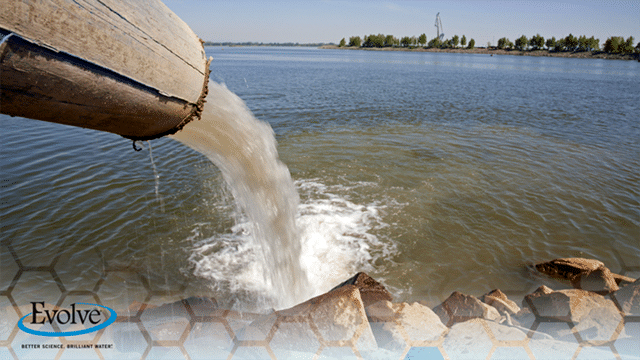Have you ever wondered after pulling a steaming bag of popcorn out of the microwave why there was a large flood of steam, but the paper bag didn’t get soggy from the butter and moisture? That is because manufacturers line the inside of the bags with a man-made chemical compound to repel moisture and ensure leak-protection. This chemical is also found in many items that we encounter in our daily lives including: nonstick pans; waterproof/stain proof fabrics; and pizza boxes, just to name a few. While these modern-day conveniences certainly have benefits, there are concerns about a by-product contaminant known as Per- and polyfluoroalkyl substances (PFAS).
What Exactly are PFAS?
PFAS (per- and polyfluoroalkyl substances) were commercially developed during the Second World War. The two chemical compounds in the PFAS family that were often produced and used are PFOA and PFOS.
PFAS can now be found in commonly used items in food packaging, and household products like cookware, paint, clothing, cosmetics, lubricants, and carpeting.
PFAS compounds can make certain items resistant to water, stains, or grease in products like “Scotchgard” and “Teflon.” Their incredibly unique chemical makeup gives them the ability to repel liquids and offer non-stick surfaces.
Unfortunately, new research is proving that exposure to these chemicals may allow them to enter our bloodstream, with the chemical compounds taking long time to break down, possibly remaining for decades.
How do PFAS Contaminate Our Water Supply?
Similar to how salt dissolves when added to a glass of water, PFAS are also water soluble, and a commonly found contaminant in today’s water supply – which may eventually make its way to your home.
Because PFAS are used in so many popular consumer products, there are numerous sources for contamination:
- Landfills where products that contain PFAS such as carpets, food wrappers, and textiles are discarded
- At home, clothes treated with PFAS will leech the chemical into the sewer and groundwater with every laundry cycle
- The industrial facilities that use these chemicals discharge wastewater into nearby streams or through the wastewater they send to treatment plants
- Firefighting foams used on residential applications and military bases are left to seep into the ground after use
Which Affected Areas are of Most Concern?
Contamination growth has continued to increase at an alarming rate. Results from a US study in July 2020 showed 2,230 locations in 49 states having PFAS contamination. This map produced by the Environmental Working Group illustrates the pollution found in both public and private waterways.
Even though some areas appear to be unaffected, the study suggests nearly all Americans are in some way affected by exposure to PFAS chemicals through their food, water, and consumer products. PFAS dangers pose a serious risk to humans as well as wildlife. One example is in the Great Lakes region, where elevated levels of PFAS was discovered in insect-eating birds eventually resulting in fish-consumption advisories and a “Do Not Eat” advisory for deer meat throughout some counties in Michigan.
While the two most common compounds of PFOA and PFOS are no longer made in the USA, backup stocks of firefighting foams have been stored for decades and are still often used in firefighting training now and into the future. And although contamination levels have been decreasing in general population since they were phased out, the compounds remain in our bodies years after initial exposure – and may exist in the environment longer. Experts expect these chemicals to be a concern for a long time before they eventually disappear completely.
Are There Long-Term Health Effects?
The PFAS chemical bonds are so difficult to break that these compounds have environmental lifetimes of hundreds of years (or more). Once ingested, these chemicals accumulate in the cells. Because they are water and oil-resistant, once consumed, they remain in the cells and continue to build up in human blood supplies and organs.
The adverse effects on human health include the possibility of infertility and disturbing immune systems, hormones, and the health of infants. Exposure effects are still being studied, but the highest concern is for women who are pregnant or likely to become pregnant. Evidence suggests PFAS may contribute to cancer, increased cholesterol levels, and kidney disease.
Like humans, the health effects on animals are similar. If here are high levels of PFAS in your water supply, your pets and/or livestock should not drink or be exposed to it.
How can We Protect Ourselves?
The EPA set advisory levels for PFAS to 70 ppt (parts per trillion), yet only a handful of state government agencies have adopted PFAS limits in drinking water or banned its use in food packaging and firefighting foam.
Unfortunately, there are no enforceable federal standards for PFAS in drinking water – so the responsibility in protecting yourself, your family, and your pets ultimately falls on you.
The good news is, as knowledge of the potentially dangerous impact of these emerging contaminants continues to expand, so do more innovative solutions being developed to address them. If you are concerned about the possibility of these contaminants in your water, reach out to your local water supply provider and ask for information about PFAS in our community.
The removal of PFAS contaminants is resistant to many, if not most, water treatment processes.
There are in-home options available on the market, but before you invest in them you should confirm they have been tested and certified to remove this specific contaminant. The ONE filter is a proven solution to effectively remove PFOA and PFAS chemical, should they be found in your water. These filters can be installed along with your existing water treatment equipment (or independently) to filter your water to every part of your home. With this type of filter, you can rest assured your family is safe from these emerging contaminants.
Give Futuramic’s Clean Water Center a call today at (402) 453-5730 to learn how the “Contaminant Reduction Technology” inside the ONE filter can keep these harmful chemicals out of your home’s water!


